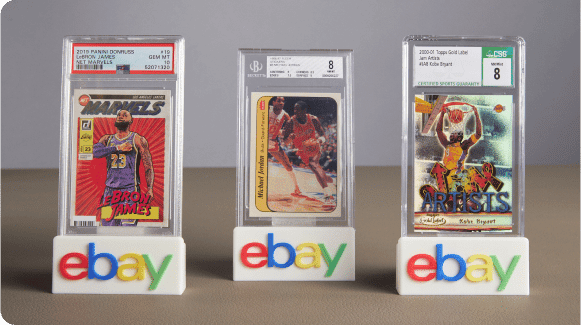From NFTs to non-fungible physical objects, this is how eBay Vault intends to begin its new storage and marketplace proposition for trading cards.
Summary
eBay Vault and the digital trading of physical trading cards

eBay Vault is the new physical location of the famous American e-commerce, with secure storage and seamless transactions, dedicated to physical collectible cards.
Resembling a house dedicated to trading cards, eBay Vault is a new 31,000-square-metre facility, open now for graded collectible cards worth more than $750 and, in the future, physical collectibles of all kinds.
Basically, once a collectible card is purchased, the buyer can have the card sent to the eBay Vault, where it will not only be stored but will also be available for resale without having to ship it around.
This has been made possible by the expansion of the Authenticity Guarantee service and collaboration with partners such as Professional Sports Authenticator (PSA).
We know just how much your collection means to you. That’s why we’ve upped our Authenticity Guarantee service to now include autos and all raw cards valued at $250 and above. 💥
— eBay (@eBay) June 9, 2022
“We know just how much your collection means to you. That’s why we’ve upped our Authenticity Guarantee service to now include autos and all raw cards valued at $250 and above”.
eBay Vault: buying and selling physical objects similar to NFTs
Thanks to the new vault, the experience of buying and selling physical collectible cards works a bit like NFTs, making everything simpler and more digital.
In fact, users can decide not to touch the items themselves, a bit like owning something physical that you don’t have room for in your wardrobe.
Certainly, however, if the owner of the physical object decides they want to touch it, by paying a fee to eBay, they can have the actual card sent to them and receive it at the address provided.
Symbolic sale of Non-Fungible Tokens
Early last month, CNBC broke the news that eBay had started to support the sale of NFTs. The news was the result of an interview with the company’s CEO, Jamey Iannone.
Unfortunately, that support was actually for a symbolic sale of NFTs on the platform, i.e. without the possibility of actual minting.
What could theoretically be done was to create an ad for a digital figurine that, after payment, the seller would undertake to send to the buyer via wallet.
This would certainly have facilitated the adoption of NFTs, since eBay allows purchases by credit card and PayPal and without the completion of special KYC procedures.
However, the removal of these NFTs from the market brought damage to the companies that had put them up for sale in terms of lost revenue. More explanations are therefore awaited from the eBay team to understand the causes of what happened.




